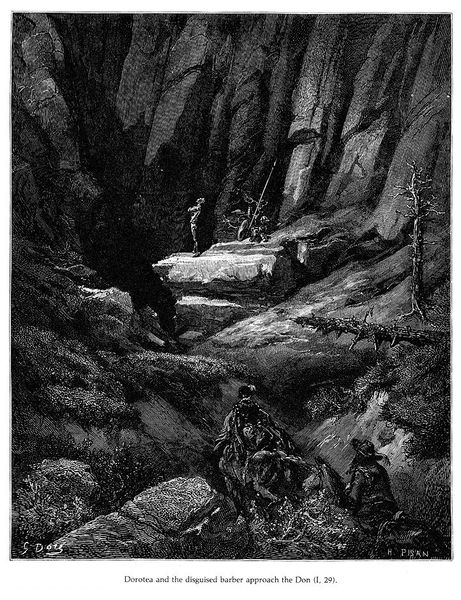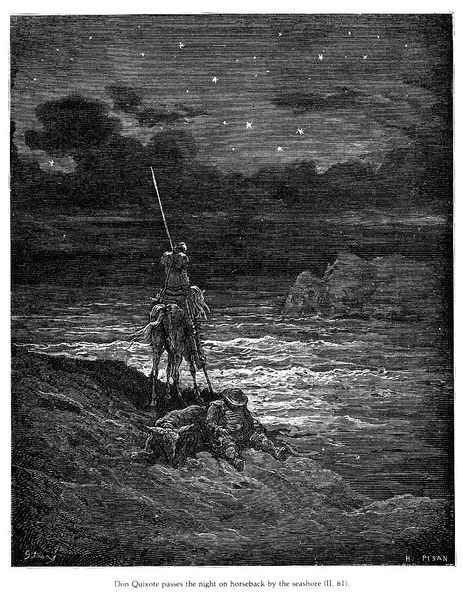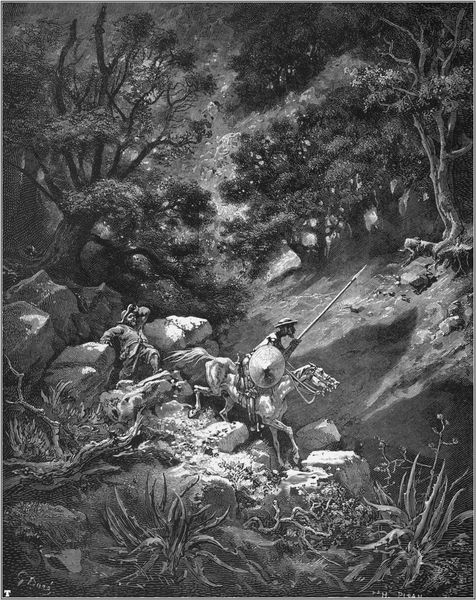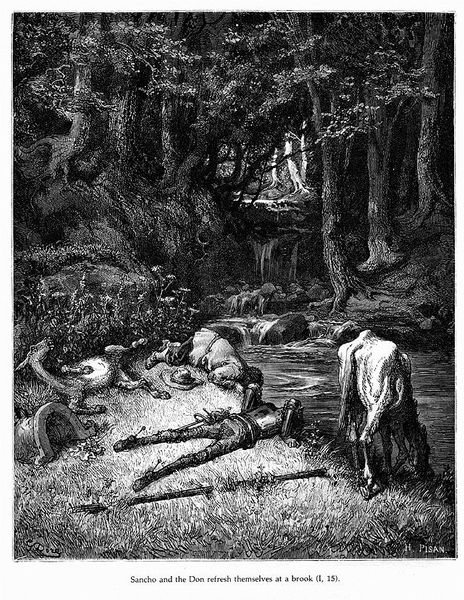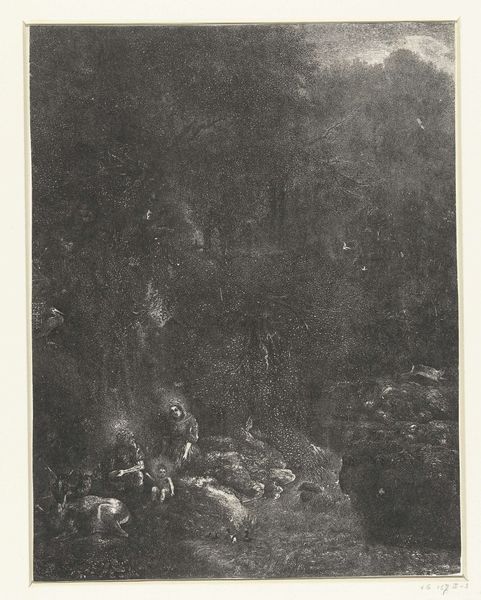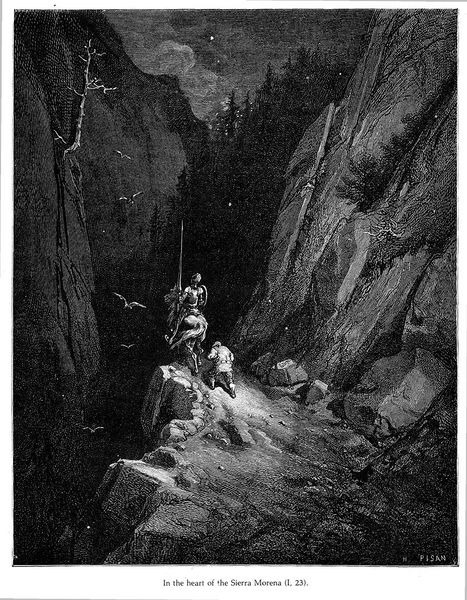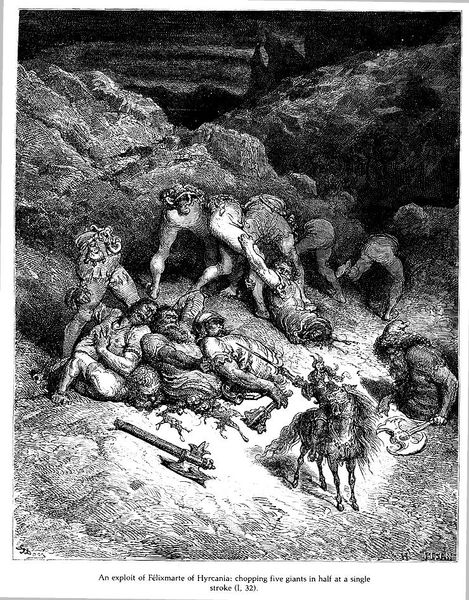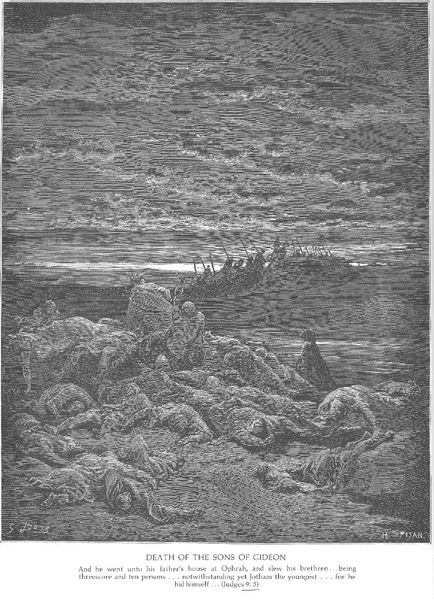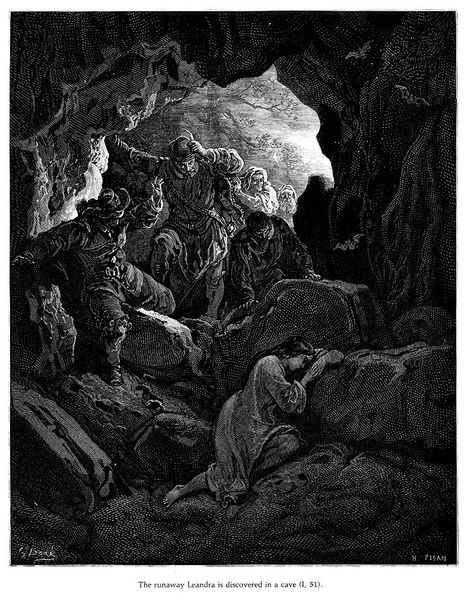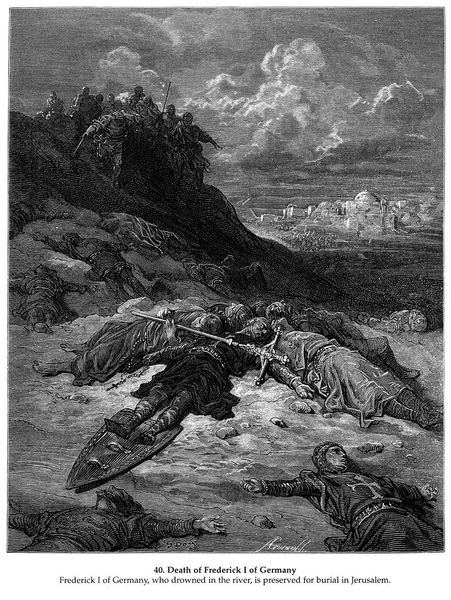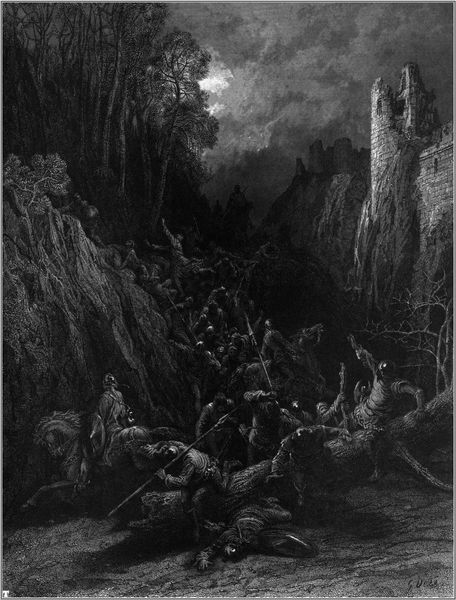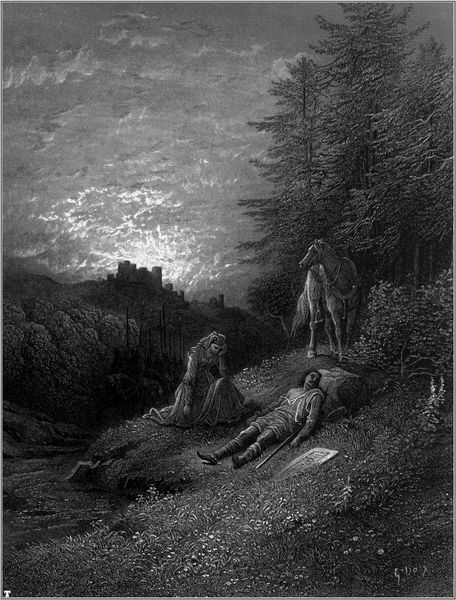
drawing, photography, engraving
#
drawing
#
photography
#
romanticism
#
history-painting
#
engraving
Copyright: Public domain
This illustration of Don Quixote was created by Gustave Dore, using the technique of wood engraving, a process that was at its height in the 19th century. This labor-intensive process involved carving a design into the end grain of a block of wood, usually boxwood, which is known for its hardness and fine texture. The block was then inked and printed, allowing for highly detailed images. In this image, we see the dramatic interplay of light and shadow, achieved through the meticulous carving of fine lines and textures. The process demanded skilled craftsmanship, turning commercial printing into a means of artistic expression. Wood engraving such as this one brought art to a wider audience, offering affordable illustrations in books and periodicals. The dark, dense forest scene and the vulnerable figures of Don Quixote and Sancho Panza highlight the possibilities of printmaking as a means of powerful storytelling. In this case, it is the social satire so particular to Cervantes' novel. It is a testament to the expressive potential inherent in both the material and the making process.
Comments
No comments
Be the first to comment and join the conversation on the ultimate creative platform.
